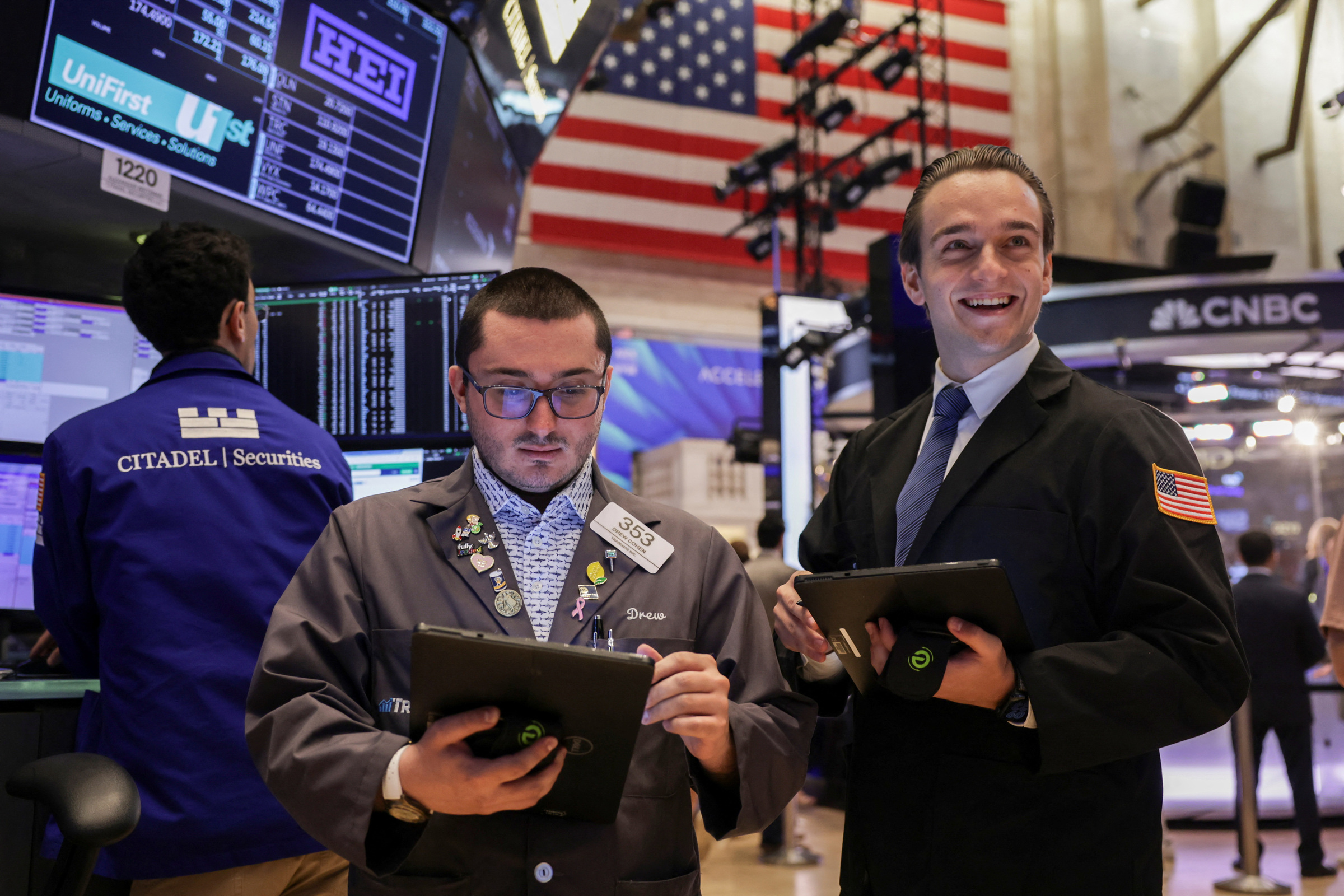According to updated data released by the BEA on 25/9, the 3.8% growth rate of US GDP in Q2 exceeded the most recent estimate and the forecast of economists surveyed by Reuters, both at 3.3%.
The growth was driven by a 29.3% decrease in imports. At the same time, new calculations show that consumer spending grew at a rate of 2.5%, higher than the 0.6% in the first quarter and significantly higher than the previously reported 1.6%.
"American consumers are much stronger than expected, even with the stock market slump and increasing trade uncertainty," said Heather Long, chief economist at Navy Federal Credit Union.
However, private investment declined, with housing investment falling 5.1%. Federal government spending and investment also contracted 5.3% in Q2, following a 5.6% decline in Q1. The BEA also revised Q1 GDP growth from a 0.5% decline to a 0.6% increase.
 |
Traders at the New York Stock Exchange on 25/7. Photo: Reuters |
Traders at the New York Stock Exchange on 25/7. Photo: Reuters
Overall, US GDP grew 1.6% in the first half of the year, and consumer spending expanded 1.5%. According to Stephen Stanley, chief economist at Santander, this result is "not great but much better than initially expected".
According to Reuters, the GDP figures for Q1 and Q2 may not accurately reflect the health of the economy due to large fluctuations in imports. Experts predict a less dynamic second half of the year due to trade policy uncertainty, leading to annual growth of around 1.5%.
Since returning to the White House, President Donald Trump has imposed double-digit import tariffs on goods from most countries, as well as tariffs on steel, aluminum, and automobiles. He views tariffs as a tool to protect American industry, bring manufacturing back to the country, and help offset the cost of the large tax cuts in the "Beautiful Act".
However, some economists argue that tariffs will harm the economy by increasing costs, inflationary pressure, and labor demand. Between 2021 and 2023, the US created an average of 400,000 jobs per month as the economy recovered from Covid-19. Hiring then slowed due to trade policy uncertainty and interest rate hikes by the Federal Reserve (Fed) in 2022 and 2023.
Recent adjustments by the Department of Labor indicate that the US economy only created an average of fewer than 71,000 new jobs per month in the first quarter. From March onwards, this figure has been even lower, averaging 53,000 jobs per month.
To support the labor market, the Fed last week lowered its benchmark interest rate for the first time since December 2024 and signaled two more cuts this year. However, the unexpectedly strong Q2 GDP growth following the data revision may give the Fed less incentive to lower interest rates despite significant pressure from Mr. Trump, according to AP.
Phien An (according to AP, Reuters)












